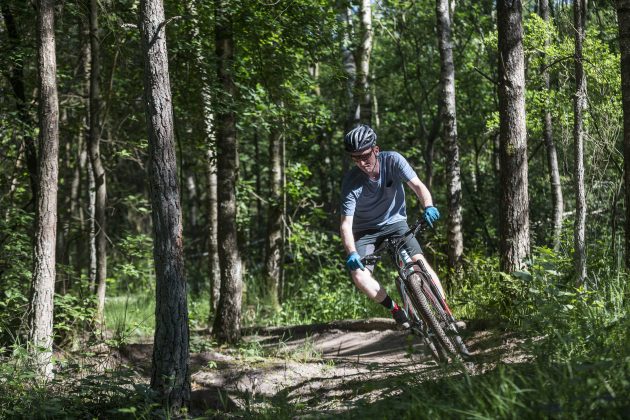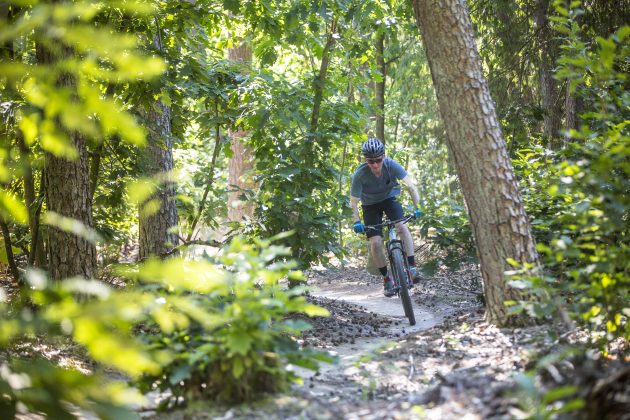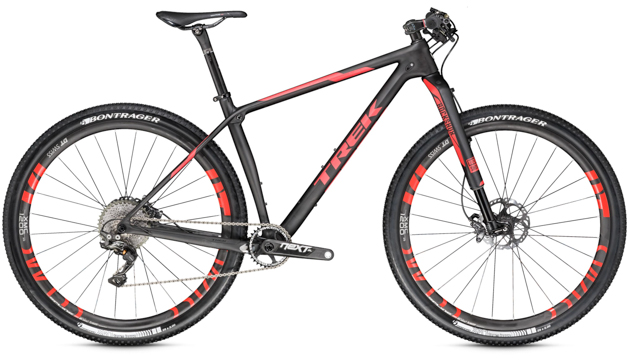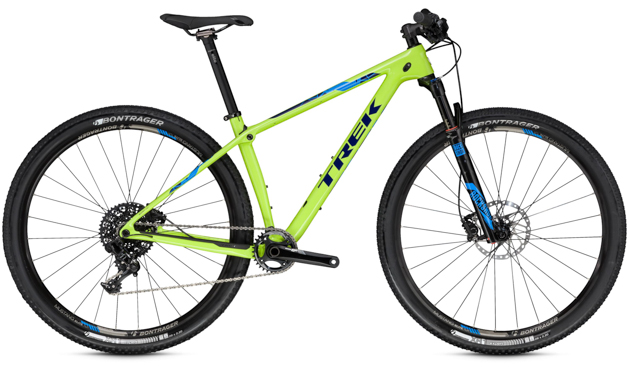Inside Line: 2016 Trek Procaliber SL hardtail
Originally posted on July 7, 2015 at 6:46 amWe’ve already covered the new Top Fuel and Fuel EX 29, so when Trek invited us to a big press launch of the new bikes in Ziest, Netherlands, I decided to concentrate on riding the hardtail Procaliber.

The hardtail has long been the cross-country race bike of choice. Even as the pro ranks have reluctantly embraced full-suspension, it seems in the collective heart of hearts, the hardtail remains the true racer’s true love.
With that in mind, it might start to make sense why Trek spent the time and money to develop the Procaliber. Trek’s Superfly FS was a successful tool for many racers, but like any other bike that is designed to compete at the highest levels of racing, it was due for a refresh. And it got it, in the form of the new Top Fuel.
What does that have to do with this new hardtail? Trek could easily just carried it previous hardtail Superfly over for another year or ten, but instead it reengineered the seat tube decoupler from the well-received (and classics winning) Domane road bike for off road use.

That IsoSpeed decoupler is a simple concept, but it promises to allow a touch of compliance with little added weight. Not full-suspension, and not even a soft-tail, as the compliance only kicks in when seated. Standing, the Procaliber is as hardtail as it gets.
The idea with this new bike is to increase the amount of time a racer (or rider) can remain seated over rough terrain. Staying seated reduces energy spent to propel rider and bike, a fine thing to accomplish while racing. But when the time comes to stand and deliver a crushing blow to your racing foes, the Procaliber is ready with zero bob or monkey-motion.

Updates don’t stop at the ISO Speed. Boost 110/148 spacing makes an appearance here, along with Trek’s new Control Freak cable routing. I’ve never been one to hype up internal routing, as it seems to create as many problems as it solves, but Trek seems to have done it nicely here. With up to 54 different possible ways to run cables, a big enough access port to install or swap cables without too much headache, and a zip-tie port to keep everything quiet, my crusty reluctance to accept integral routing as a good thing may be starting to fade.

Those wanting or needing to run an external rear brake hose have the option with super simple cable-tie slots on the downtube. And for those riders with some taste for some gnar, or who may be smart enough to realize the improvements a dropper post brings to almost any ride, internal and external routing is provided for the dropper of your choice.
It is somewhat telling that I can spend two paragraphs on cable routing, but with lockouts, droppers and Di2 electric drivetrains, things aren’t so simple anymore.

Fortunately, I not only got the low down on the bike tech, I also got to ride this thing, along with a quick lap on the Top Fuel as well for comparison.
I got fitted up on the $4,730 Proclaiber 9.8 SL, which a step down from the top of the line 9.9 SL which signs in with a $8,400 price tag. The 9.8 is no slouch, with a SID RL fork, a mixed X01 and X1 drivetrain, and DT Swiss wheels.

Cross country race bikes have been rare around Dirt Rag HQ lately. There’s not a thing in the world wrong with them, but we’ve all become enamored with trail bikes. Hopping on the Procaibler SL brought back some memories of long stems and narrow bars.
Don’t look at that as a negative. Most cross-country racers ride road bikes more often than trail bikes, so some steep and aggressive geometry is well suited to this bike’s intended purpose, which is to be a mean and lean cross country race bike.

The course I rode in Zeist was almost exclusively singletrack, with minimal elevation and minimal straight sections of trail. While a few steep climbs would have been nice to get a feel for the Procaliber SL, overall the terrain was well-suited to test the bike under hard efforts and its ability to handle terrain at speed. Some sections of sand kept everyone honest, but there wasn’t much in the way of challenging terrain.
The IsoSpeed decoupler isn’t magic. I doesn’t provide the same level and comfort as the Top Fuel, but it does take the edge off some of the terrain that would otherwise require standing up. The downside to this having to retune what bumps to get out of the saddle for, as it at times lulled me into a sense of a comfort that can be rudely interrupted by a terrain disruption over particular size.
But that small amount of compliance is not a bad thing at all, especially considering this bike retains that hardtail snap when standing. With hundreds of accelerations per 16km lap, this bike revealed itself as a true race bike.

Compared to the Top Fuel, the Procaliber SL really made me want to stand and a attack more often, but it starts to fade (or I started to fade) as terrain gets more and more rough. For staying seated and keeping a steady spin, the Top Fuel is going to win hands down. But for a rider looking for a bike to suit a “stand and hammer” racing or riding style the Procaliber SL is a more comfortable option than perhaps any race-oriented hardtail I’ve ridden to date.
All this new tech comes as some expense. When I asked if we might see these technology in a less expensive aluminum version, a contact deep inside the bowels of Trek directed me to look at the evolution of the IsoSpeed decoupler on the road side. The Domane model lineup now has less expensive aluminum versions, all the way down to a $1,430 complete bike. Still not cheap, but not crazy money either.
And as you would expect, the first year of something like the Procaliber SL is going to be expensive, but this a race bike after all. Speed costs.

Procaliber 9.9 SL – $8,400

Procaliber 9.8 SL – $4,830

Procaliber 9.7 SL – $3,680

Procaliber 9.9 frame – $2,630